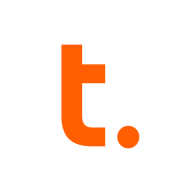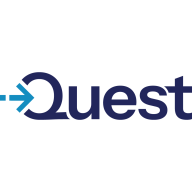

Teradata and Toad Data Point are competing in the data management and analysis space. Toad Data Point offers a better overall value due to its broad features and cost-effectiveness.
Features: Teradata provides powerful analytics capabilities, scalability, and an efficient parallel processing architecture, making it ideal for large enterprises handling significant data operations. Toad Data Point stands out for its user-friendly interface, extensive connectivity to diverse data sources, and automation features, appealing to businesses seeking straightforward data analysis solutions.
Room for Improvement: Teradata could enhance its user interface to simplify operations for non-expert users, improve cost-effectiveness for smaller enterprises, and streamline its complex deployment process. Toad Data Point may benefit from expanding its advanced data analytics features, enhancing performance with high data volumes, and offering more integrated security solutions for enterprise-level clients.
Ease of Deployment and Customer Service: Toad Data Point offers easy deployment and robust customer support, facilitating smooth integration for businesses. Teradata, while technically advanced, can involve a more complicated deployment process, which might require additional resources and expertise.
Pricing and ROI: Teradata typically involves higher initial setup costs, which can affect ROI in the long term. In contrast, Toad Data Point's moderate pricing and quick implementation can lead to faster ROI, presenting a pricing advantage that can be attractive for budget-conscious organizations.
| Product | Market Share (%) |
|---|---|
| Teradata | 0.8% |
| Toad Data Point | 0.6% |
| Other | 98.6% |


| Company Size | Count |
|---|---|
| Small Business | 26 |
| Midsize Enterprise | 12 |
| Large Enterprise | 49 |
Teradata is a powerful tool for handling substantial data volumes with its parallel processing architecture, supporting both cloud and on-premise environments efficiently. It offers impressive capabilities for fast query processing, data integration, and real-time reporting, making it suitable for diverse industrial applications.
Known for its robust parallel processing capabilities, Teradata effectively manages large datasets and provides adaptable deployment across cloud and on-premise setups. It enhances performance and scalability with features like advanced query tuning, workload management, and strong security. Users appreciate its ease of use and automation features which support real-time data reporting. The optimizer and intelligent partitioning help improve query speed and efficiency, while multi-temperature data management optimizes data handling.
What are the key features of Teradata?In the finance, retail, and government sectors, Teradata is employed for data warehousing, business intelligence, and analytical processing. It handles vast datasets for activities like customer behavior modeling and enterprise data integration. Supporting efficient reporting and analytics, Teradata enhances data storage and processing, whether deployed on-premise or on cloud platforms.
We monitor all Data Integration reviews to prevent fraudulent reviews and keep review quality high. We do not post reviews by company employees or direct competitors. We validate each review for authenticity via cross-reference with LinkedIn, and personal follow-up with the reviewer when necessary.